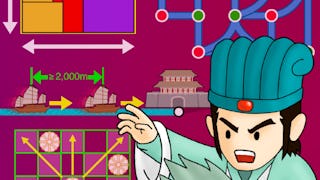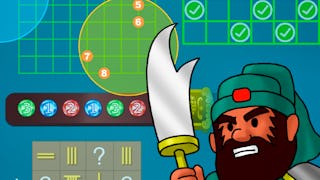In this online course we’ll implement (in Python) together efficient programs for a problem needed by delivery companies all over the world millions times per day — the travelling salesman problem. The goal in this problem is to visit all the given places as quickly as possible. How to find an optimal solution to this problem quickly? We still don’t have provably efficient algorithms for this difficult computational problem and this is the essence of the P versus NP problem, the most important open question in Computer Science. Still, we’ll implement several solutions for real world instances of the travelling salesman problem.

Enjoy unlimited growth with a year of Coursera Plus for $199 (regularly $399). Save now.

Delivery Problem
This course is part of Introduction to Discrete Mathematics for Computer Science Specialization


Instructors: Alexander S. Kulikov
21,707 already enrolled
Included with
(375 reviews)
Skills you'll gain
Details to know

Add to your LinkedIn profile
8 assignments
See how employees at top companies are mastering in-demand skills

Build your subject-matter expertise
- Learn new concepts from industry experts
- Gain a foundational understanding of a subject or tool
- Develop job-relevant skills with hands-on projects
- Earn a shareable career certificate

There are 3 modules in this course
We start this module with the definition of mathematical model of the delivery problem — the classical traveling salesman problem (usually abbreviated as TSP). We'll then review just a few of its many applications: from straightforward ones (delivering goods, planning a trip) to less obvious ones (data storage and compression, genome assembly). After that, we will together take the first steps in implementing programs for TSP.
What's included
4 videos1 reading5 assignments2 ungraded labs
We'll see two general techniques applied to the traveling salesman problem. The first one, branch and bound, is a classical approach in combinatorial optimization that is used for various problems. It can be seen as an improvement of the brute force search: we try to construct a permutation piece by piece, but at each step we check whether it still makes sense to continue constructing the permutation (if it doesn't, we just cut off the current branch). The second one, dynamic programming, is arguably the most popular algorithmic technique. It solves a problem by going through a collection of smaller subproblems.
What's included
4 videos2 assignments1 ungraded lab
As we've seen in the previous modules, solving the traveling salesman problem exactly is hard. In fact, we don't even expect an efficient solution in the nearest future. For this reason, it makes sense to ask: is it possible to find efficiently a solution that is probably suboptimal, but at the same time is close to optimal? It turns out that the answer is yes! We'll learn two algorithms. The first one guarantees to find quickly a solution which is at most twice longer than the optimal one. The second algorithms does not have such guarantees, but it is known to work pretty well in practice.
What's included
2 videos1 assignment1 ungraded lab
Earn a career certificate
Add this credential to your LinkedIn profile, resume, or CV. Share it on social media and in your performance review.
Instructors

Offered by
Explore more from Algorithms
 Status: Preview
Status: PreviewUniversity of Florida

The Chinese University of Hong Kong

The Chinese University of Hong Kong

The Chinese University of Hong Kong
Why people choose Coursera for their career




Learner reviews
375 reviews
- 5 stars
76.26%
- 4 stars
17.60%
- 3 stars
3.20%
- 2 stars
2.40%
- 1 star
0.53%
Showing 3 of 375
Reviewed on May 20, 2019
This course is to the point and challenges you with practical application.
Reviewed on Jun 3, 2020
I liked it! Interesting material and challenging assignments! I am going to miss these professors a lot. Thanks for everything you geniuses from HSE!
Reviewed on Jul 16, 2021
Great course, but complex matters need to explained more slowly and that's overall for all the specialization, but many thanks! those were some challenging courses!

Open new doors with Coursera Plus
Unlimited access to 10,000+ world-class courses, hands-on projects, and job-ready certificate programs - all included in your subscription
Advance your career with an online degree
Earn a degree from world-class universities - 100% online
Join over 3,400 global companies that choose Coursera for Business
Upskill your employees to excel in the digital economy
Frequently asked questions
To access the course materials, assignments and to earn a Certificate, you will need to purchase the Certificate experience when you enroll in a course. You can try a Free Trial instead, or apply for Financial Aid. The course may offer 'Full Course, No Certificate' instead. This option lets you see all course materials, submit required assessments, and get a final grade. This also means that you will not be able to purchase a Certificate experience.
When you enroll in the course, you get access to all of the courses in the Specialization, and you earn a certificate when you complete the work. Your electronic Certificate will be added to your Accomplishments page - from there, you can print your Certificate or add it to your LinkedIn profile.
Yes. In select learning programs, you can apply for financial aid or a scholarship if you can’t afford the enrollment fee. If fin aid or scholarship is available for your learning program selection, you’ll find a link to apply on the description page.
More questions
Financial aid available,

